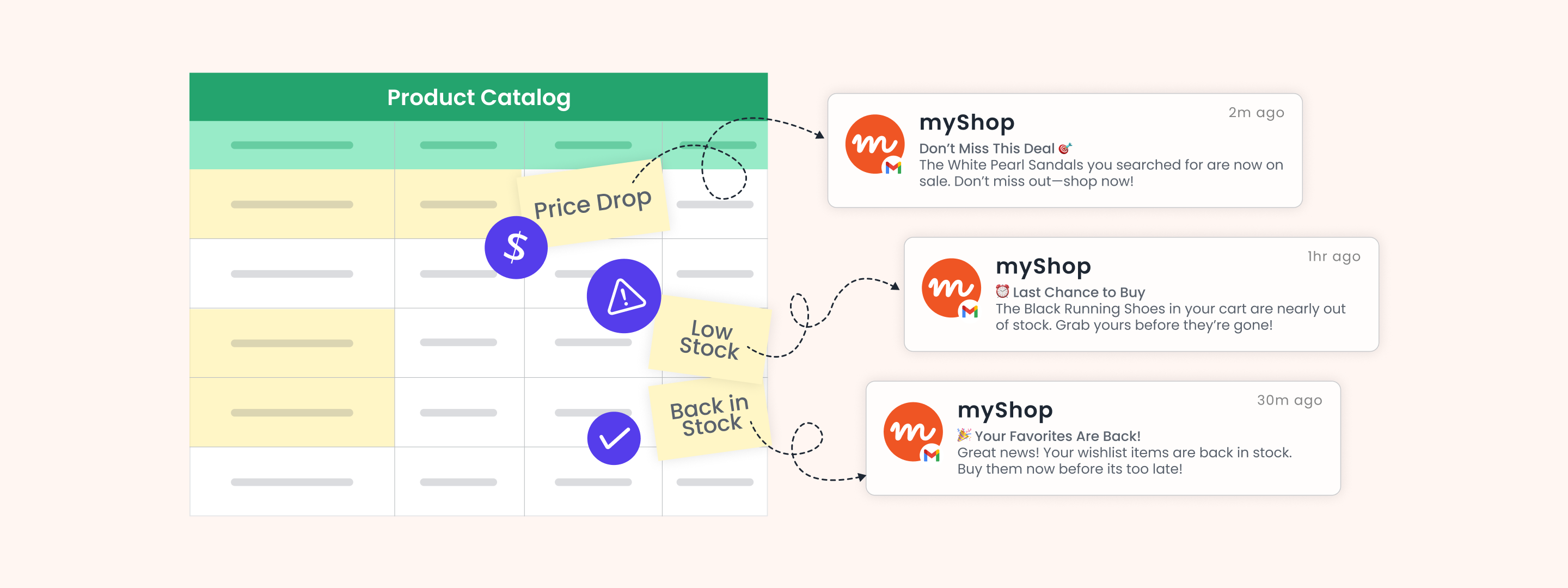B2B companies are surrounded by fierce competition that is growing by the day. In times like these, businesses’ customer engagement practices need a major revamp to rise above the rest.
A recent Microsoft study claims the attention span of modern consumers is about 8 seconds — that’s shorter than a goldfish. Therefore, while your customers are hopping between apps, it’s vital to catch their attention while it lasts through solid engagement strategies.

This article will walk you through the eight best B2B customer engagement tactics you can implement to strengthen customer relationships.
What is Customer Engagement?
Customer engagement is all about building long-lasting relationships with your customers through interactions across various channels. In the B2B context, customer engagement is particularly crucial as it involves nurturing relationships with key decision-makers and stakeholders who can significantly impact your business’s success.
Customer engagement is more than making a sale; it’s about forging a bond with your audience and providing value at every touch point.
Engaged customers are likely to stick with your brand, endorse your products or services, and contribute to your business growth. Prioritizing customer engagement helps establish trust and loyalty that keeps customers coming back to you.
To effectively engage customers, you need to understand their needs, preferences, and behaviors. This requires an approach that uses both online and offline channels to reach and connect with them. This can involve emails, engaging social media posts, valuable blogs, and top-notch customer service.
When executed well, B2B customer engagement can be a tool for attracting customers, retaining existing ones, and driving long-term success. By investing in strategies that focus on customer engagement, you can set your brand apart from the competition and build a customer base for the future.
What are Customer Engagement Strategies?
Customer engagement strategies are well-planned, creative approaches to ensuring a positive experience, maintaining customer interest in your brand, and encouraging repeat business. These strategies encompass meaningful interactions with customers at points of contact, from their initial engagement with your marketing channels to ongoing post-purchase assistance.
The objective of a customer engagement strategy is to foster enduring relationships with customers by delivering experiences throughout their entire interaction journey. This demands a collaborative approach from all customer-facing departments within your organization, such as marketing, sales, support, customer success and even product development.
Implementing a Customer Engagement Plan for Success
Here is how you can create a customer engagement plan that will help you streamline your customer engagement strategies:
-
- Set objectives: Clearly define the goals you aim to achieve with your customer engagement initiatives, such as boosting retention rates, enhancing customer satisfaction or increasing referrals.
- Identify your target audience: Understand your customers’ demographics, preferences, and behaviors to tailor your engagement tactics appropriately.
- Select communication channels: Choose the right channels for interacting with your target audience based on their preferences and your company’s resources.
- Create engaging content: Develop relevant content that connects with your audience and encourages interaction.
- Provide training for your team: Ensure that all support staff members who engage with customers know your customer engagement strategies and possess the skills to deliver exceptional customer experiences.
8 best practices on how to keep B2B customers engaged
-
-
-
- Hyper-personalize communication and customer experiences
-
-
Generic communication leads to a weak customer-brand relationship and poor customer experience (CX). Hyper-personalization is currently the best competitive differentiator and the answer to building a strong bond with your customers. In fact, brands that tailor customer journeys can increase their average order value by as much as 12%, according to Monetate.
How can you hyper-personalize messaging and communication?
Using proactive customer segmentation based on their product usage. Most B2B businesses have simple lists such as users that are active, inactive, and churned — which are impractical for personalization.
Product usage-based segmentation is an integral part of behavioral segmentation. Using both, you can segment your users based on how they interact with your products, how much time is spent inside your product, and how many features are used.
Further, track product usage and customer behavior to glean valuable insights and to iteratively improve your customer engagement strategy using hyper-personalization.
Sulekha, the leading digital platform for businesses, saw a 2x revenue boost through data-backed hyper-personalization that effectively engaged its daily website visitors and, as a result, nailed its engagement game.
-
-
-
- Embrace video storytelling and embed it into your product experiences
-
-
Videos showcase brand storytelling in a fun and creative way — something that not many articles can do. Video storytelling presents your products visually and in action, thus instantly engaging your customers and grabbing their attention right away.
Stories can bring your products to life. One way B2B businesses can do this is by creating a video story, naturally embedding the product within the video, and conveying a message that enhances the customers’ overall product experience.
Besides websites and advertising, B2B businesses can use video storytelling in email newsletters and social media, too.
Here’s a popular example by Beco, that promoted its platform by leveraging WebEngage to send real-time video updates to customers.
Beco incorporated an innovative way to interact with customers where every time a customer receives their order or abandons their shopping cart on the website, they receive a video message from Dia Mirza on WhatsApp. By integrating Dia’s Digital IP, Beco was able to hyper-personalize communication it sent to its users.

-
-
-
- Drive customer engagement and strengthen relationships with customer loyalty programs
-
-
Incentivizing customers is a sure-shot way to drive healthy customer engagement. Not just this, rewards-based customer loyalty programs also trigger brand affinity and lucrative relationships between businesses and consumers.
Here’s a list of some save-worthy B2B customer loyalty program examples you could choose from:
-
-
-
- Provide exclusive discounts on orders that can be used for future purchases.
- Run referral programs to upgrade or extend user plans based on the number of referrals sourced.
- Offer complimentary products by partnering with related third parties.
- Create an exclusive partnership program with premium products based on the customer’s lifetime value.
-
-
Use gamification to increase engagement
-
-
-
Gamification is widely used in B2C businesses to generate traffic and is equally effective for B2B as well. When properly utilized, gamification can increase customer engagement by up to 47%, making it a powerful tool for keeping B2B customers engaged with your platform and products.
In B2B, gamification elements and strategies motivate customers to keep engaging with your platform and products. Leaderboards, badges, and certificates are examples of gamification elements.
Gamification lets your users enjoy your products and explore more features while allowing you to upsell or cross-sell products. So reward your customers once they reach certain milestones by offering additional product benefits, setting up a usage plan of X months, upgrading their subscription plans to paid, and more.
You can also experiment with gatekeeping features or exclusive content. For example, if someone is making use of feature A, target them with a message that shows how others are also using feature B alongside – but they need to pay an additional fee for the same.
This way, you create a win-win situation — you receive more active engagement, and your customers get to enjoy more accessible premium benefits.
-
-
-
- Engage customers with personalized in-app product messaging
-
-
In-product or in-app messaging is a type of communication executed with your customers inside the product while they are using your product or application. In-product messaging can be operated irrespective of the device your customers are on.
Such messaging lets you create a personalized communication channel with your active customers and engage them for longer. Other than pop-up messages inside your platform, you can provide real-time customer engagement with live chat options, a chatbot, and in-app messages to notify your customer of a product/feature upgrade, steps to use x feature, and more.
Note: ‘In-product’ can apply to any product, such as websites, software tools, or mobile apps.
Here’s a perfect example of in-product messaging in action – the WebEngage chatbot:

Sign up on WebEngage to see how we personalize user experience.
Boost customer engagement and drive conversions with targeted in-app notifications.
-
-
-
- Create a sense of FOMO among your consumers
-
-
Creating a sense of FOMO (Fear Of Missing Out) is a game-changer in engaging inactive users. FOMO is a popular marketing tactic, aka. consumer behavior trend, where brands let consumers know what they’re missing out on by showcasing a compelling reason to turn them into visitors or purchasers.
How can you, as a B2B business, use FOMO? Communicate with your consumers using solid social proof to let them know what they’re missing out on. Add real results from real customers, including testimonials, add use cases, and let inactive consumers visualize that it could be them achieving the same results.
For instance, communicate how the consumer has been using push notifications for cart recovery, but a similar brand has been doing it using your email marketing tool and fetching exceptional results.
Below is a good example of how Grammarly Business used the FOMO strategy using a countdown:

-
-
-
- Host events
-
-
Events bring people together and let impactful, engaging face-to-face conversations happen. Physical conferences or even virtual events like webinars humanize your business and let you connect with your customers, educate them about your products, exchange ideas, and collect direct feedback.
Semrush, for instance, hosts multiple webinars and in-person events to connect and engage with its consumers, investors, and community. Such events also help shorten the sales funnel and increase customer retention rates.
-
-
-
- Provide proactive support and ongoing education with a resource center
-
-
Provide proactive support and ongoing education with a resource center
Customer engagement for a B2B business should not be solely focused on ‘selling’ but also on genuinely educating its consumers.
And one significant way to proactively offer consumer support and education is through a dedicated free resource center. Resources such as interactive guides, feature explanations, video tutorials, etc., help increase customer satisfaction and engagement.
To understand consumer requirements, use analytics to track and measure user needs and get to know the most accessed resources to tailor your content accordingly.
For example, at WebEngage we continually monitor the FAQs that our support team tackles. On the basis of their observations and market analysis, we set up an extensive knowledge base.
But as the product evolves and our user base expands, we also monitor how these documents are being consumed – this has helped us categorize documents and expand resources in a strategic way, letting our users guide the path.
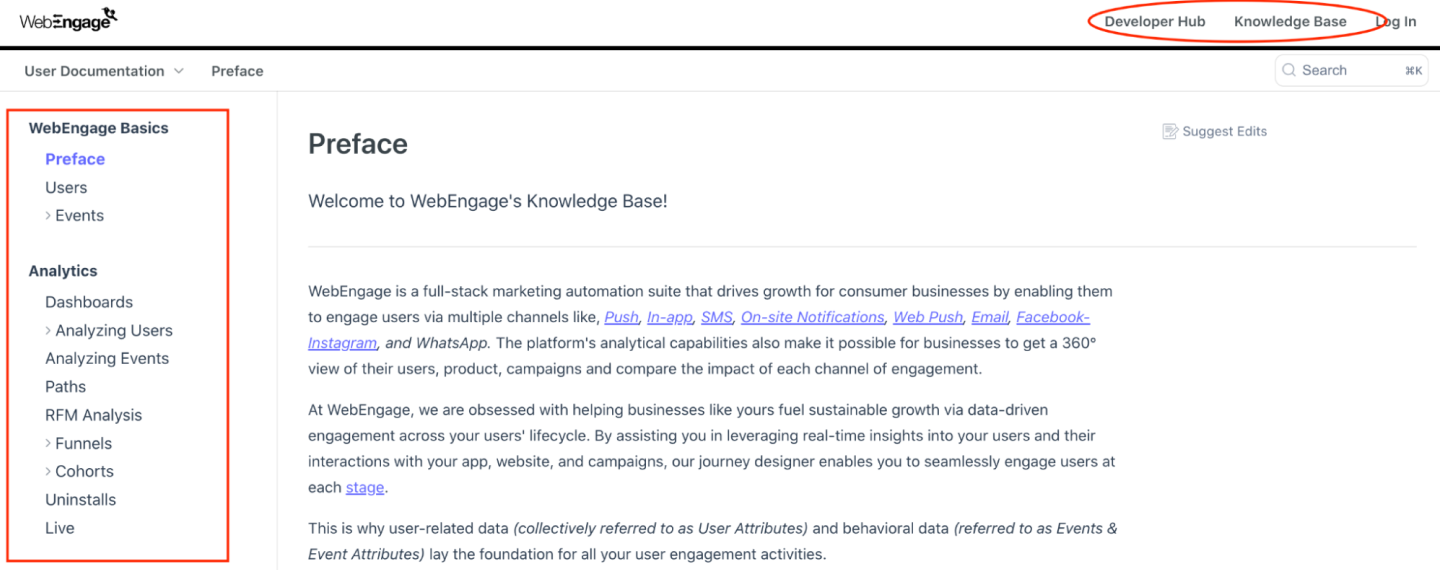
Bonus tip
Consider cultural differences and personalize accordingly
One way to evolve your service and customer engagement game is by being mindful of the variety of cultures your consumers belong to.
So things like preferences, education backgrounds, communication skills, and tech savviness, among many others, should be given close attention while creating any engagement or marketing strategy. This way, you ensure consumer inclusivity by being thoughtful.
Shopify leads by example for this principle. The brand runs localized campaigns with exclusive benefits and discounts that appeal to a specific set of audience. It recently launched additional help for its Indian merchants as the brand realized it needed more help setting up the platform.
Psst. WebEngage is also on Shopify. Check it out here.
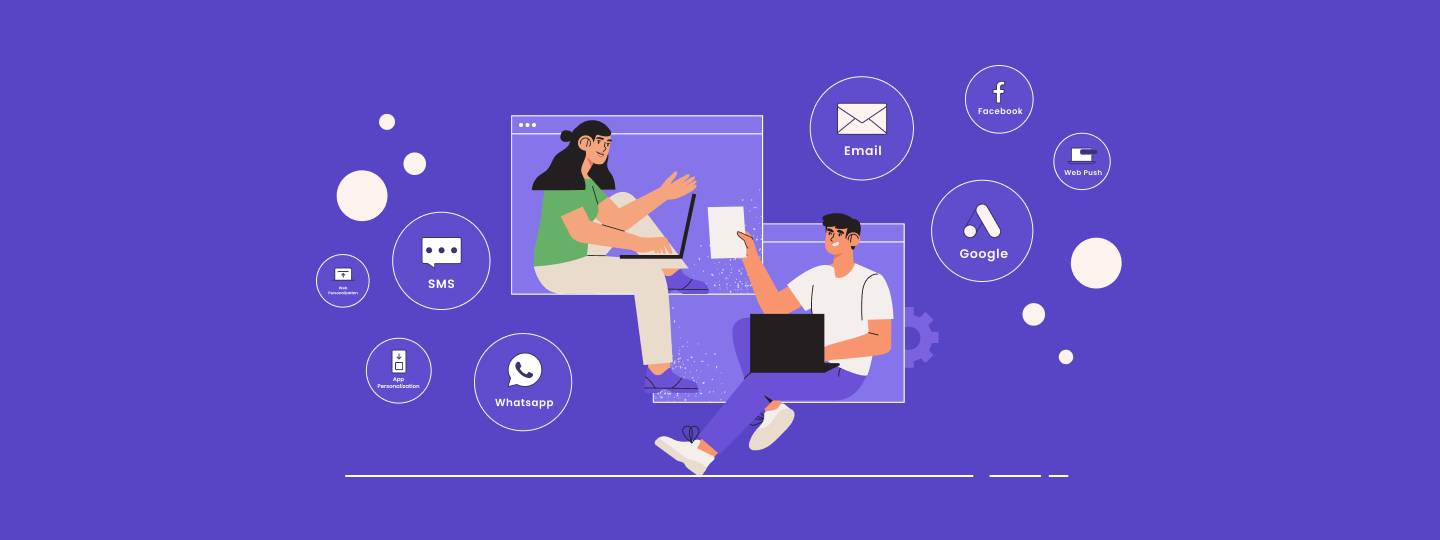
Some final thoughts
The ultimate objective with B2B customer engagement is to let your consumers feel heard and develop an intuitive relationship with them while working on their feedback.
We’ve discussed some tremendous result-driven customer engagement methods for B2B businesses. But your engagement strategies can vary based on who you’re addressing. Therefore, you must know your target market and create an ICP (ideal customer profile) before you go head-on with any of these best practices.
FAQs
1. What is an example of customer engagement?
Let’s consider an example of a software company that wants to roll out new product features and aims to educate and attract customers using this. To kick things off they craft a tailored email campaign showcasing the advantages of the features and extending a personalized invite to attend an interactive webinar presentation.
During the webinar session, the company’s product specialists demonstrate the features, present real-life scenarios illustrating their applications, and address live questions from participants. They also provide a limited-time trial version of the software, encouraging attendees to explore the features.
Post webinars, the company follows up with emails expressing gratitude to attendees for their engagement and offering resources like whitepapers, case studies, and instructional guides to assist them in maximizing the benefits of the features. Additionally, they invite attendees to schedule consultations with product experts to delve into their requirements and determine how the software can meet their expectations.
As the trial period nears its end, the company sends tailored emails to users highlighting their progress and the benefits they’ve obtained from using the software. They present an offer for users who opt to upgrade to the paid version of the software to ensure a smooth transition process.
By engaging customers throughout the customer journey with content, personalized assistance, and opportunities for hands-on interaction, the software company showcases its dedication to helping customers achieve success. This helps establish trust, credibility, and connections with customers, enhancing the chances of conversion and fostering long-term customer loyalty.
The customer engagement ideas discussed in this example are just a few of the many more strategies that you can implement for your customer engagement campaigns.
What is the goal of customer engagement?
The main objective of engaging with customers is to establish robust relationships that result in loyalty, satisfaction, and endorsement. By offering value and experiences across various touchpoints, businesses aim to create an emotional connection with their customers.
This connection encourages customers to continue using the company’s products, share feedback, and endorse the brand to others, ultimately bolstering the business’s growth and success.
What is positive customer engagement?
Positive customer engagement refers to interactions between a business and its customers that leave the customer feeling valued, satisfied, and happy about their relationship with the brand.
Examples of positive customer engagement include:
-
-
- Prompt and helpful responses to customer inquiries
- Tailored suggestions that cater to the customer’s requirements and preferences
- Taking proactive steps to assist customers in reaching their objectives
- Engaging and informative content that educates and inspires customers
- Rewards and recognition for customer loyalty and advocacy
-
Looking to transition your business with exceptional hyper-personalized customer engagement strategies?





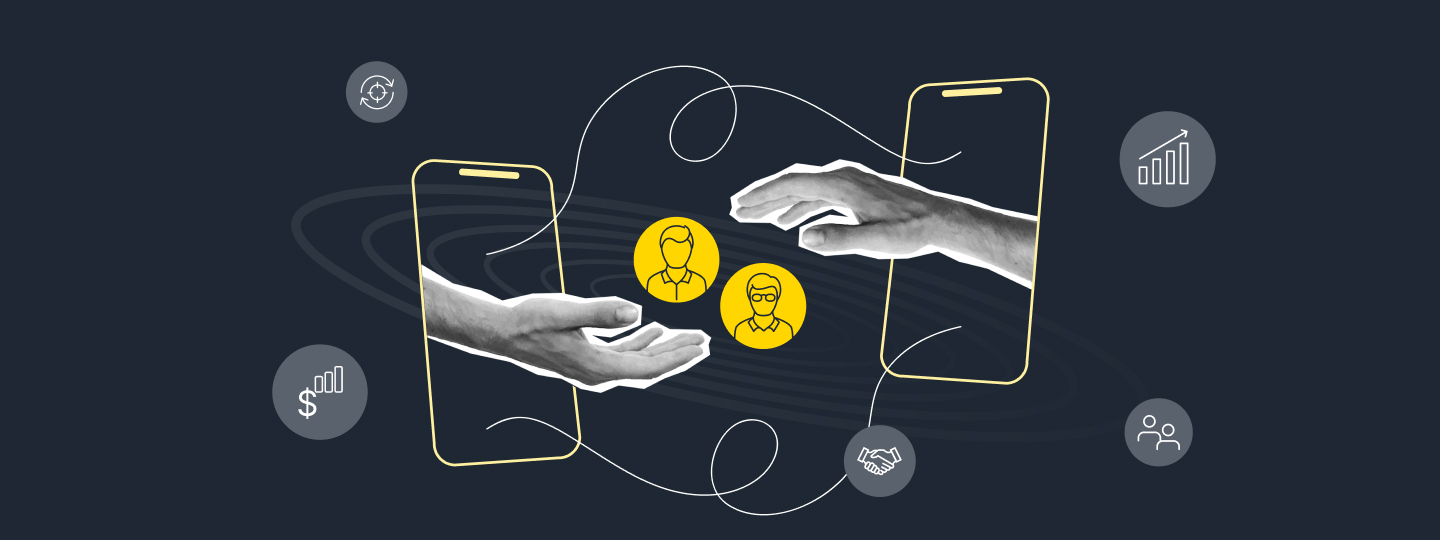

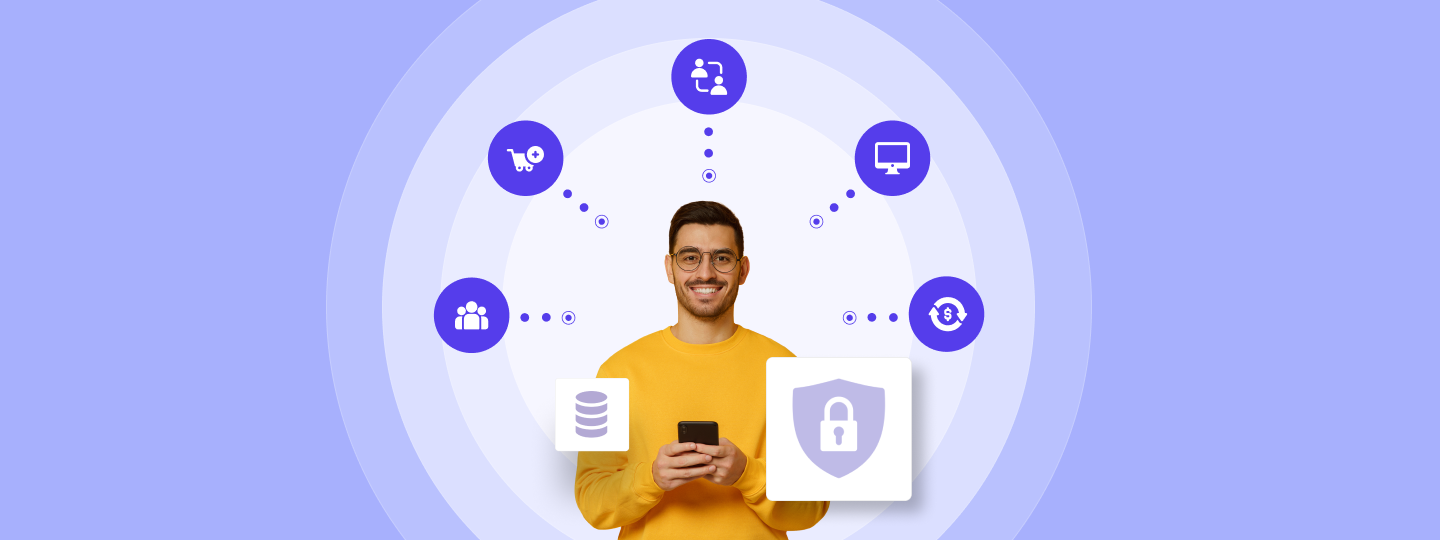
 Sanjay Mishra
Sanjay Mishra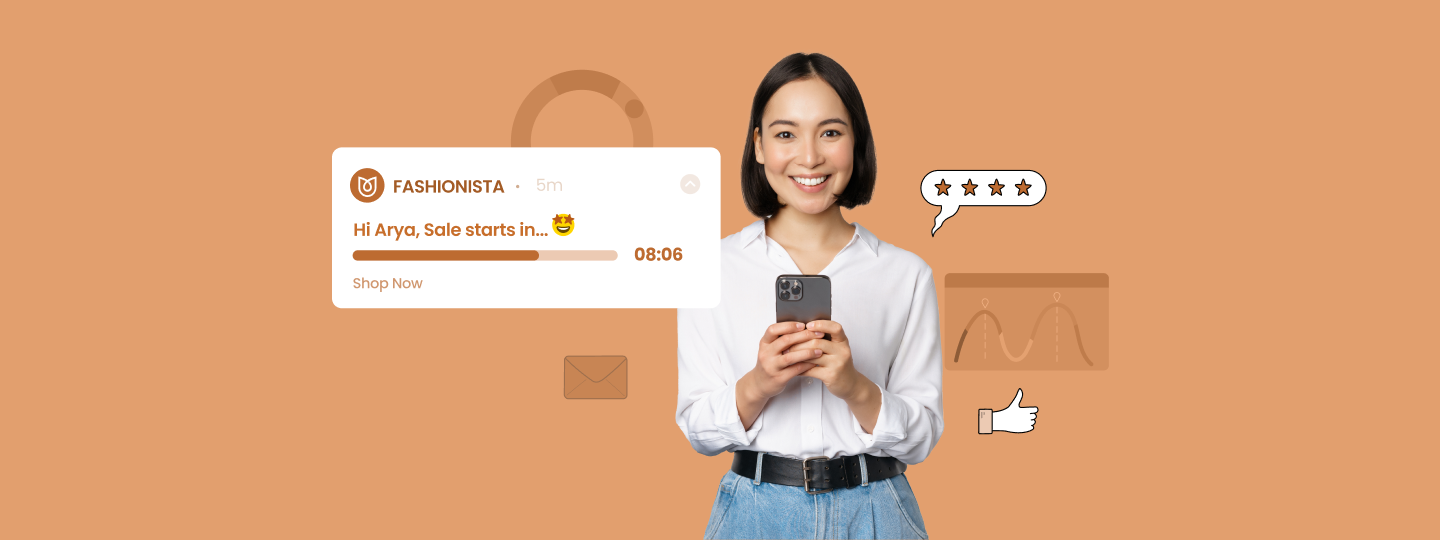
 Prakhya Nair
Prakhya Nair